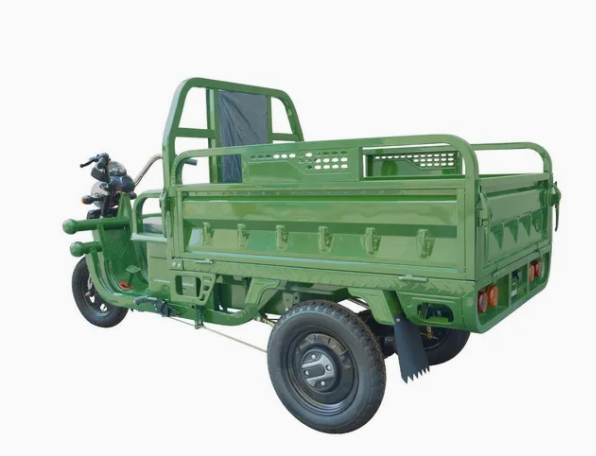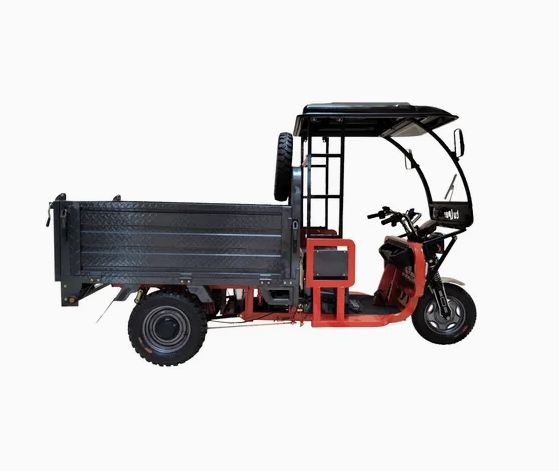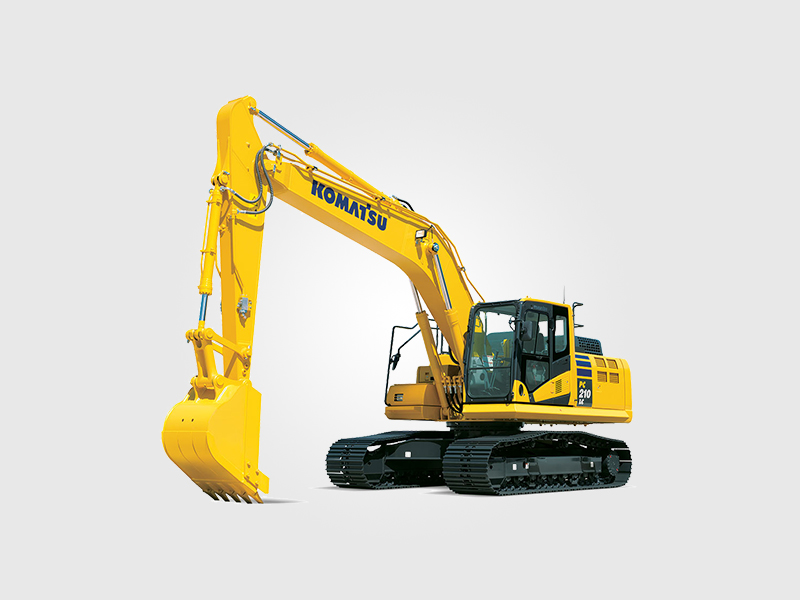Expected growth rate of the Global Electric Cargo Three Wheeler Market
News 2022-06-14
What is the expected growth rate of the Global Electric Cargo Three Wheeler Market during the forecast period?The global electric cargo three wheeler market is projected to exhibit a steady growth rate of 12.9% during the forecast period from 2023 to 2032.

Global Electric Cargo Three-Wheeler Market: Growth Trends and Future Projections
The global electric cargo three-wheeler market is undergoing a transformative phase, driven by technological advancements, environmental regulations, and the rising demand for sustainable logistics solutions. As urbanization accelerates and e-commerce reshapes supply chains, these vehicles are emerging as a critical tool for last-mile delivery, agricultural logistics, and small-scale freight transport. Let’s delve into the market’s growth trajectory, supported by data, storytelling, and actionable insights.
Current Market Landscape
The electric cargo three-wheeler market has witnessed steady expansion, with global sales reaching ¥61.86 billion (approximately $8.5 billion) in 2023. According to the 2023-2028 Global and China Three-Wheeler Industry Market Research Report, this figure is projected to soar to ¥149.89 billion ($20.6 billion) by 2030, reflecting a compound annual growth rate (CAGR) of 13.48%. In China alone, the domestic market for electric cargo three-wheelers hit ¥45 billion ($6.2 billion) in 2023, with a year-on-year growth rate of 12%. By 2025, analysts anticipate this segment to surpass ¥60 billion ($8.3 billion), fueled by policy tailwinds and logistics modernization.
Why the surge? Picture a farmer in rural China: Electric three-wheelers haul freshly harvested vegetables from fields to markets, replacing diesel-powered trucks that guzzle fuel and emit pollutants. Similarly, in crowded cities like Mumbai or Jakarta, these nimble vehicles navigate narrow alleys to deliver packages, dodging traffic both rural and urban logistics—explains their universal appeal.
Key Growth Drivers
- **Policy Push for Green emissions standards. For instance, China’s “dual carbon” goals (peaking emissions by 2030, carbon neutrality by 2060) have accelerated the phase-out of fossil-fuel-powered three-wheelers. India’s FAME-II scheme offers incentives for electric vehicle adoption, while the EU’s Green Deal prioritizes zero-emission urban logistics. These policies are not just bureaucratic checkboxes—they’re reshaping market economics.
- E-Commerce and Last-Mile Delivery BoomThe pandemic-induced e-commerce explosion is far from over. In 2023, global online retail sales surpassed $5.8 trillion, with logistics networks straining to meet “next-day delivery” expectations. Electric cargo three-wheelers, with their low operating costs ($0.03–$0.05 per kilometer versus $0.15 for diesel variants), are becoming the backbone of urban logistics. Companies like Amazon and Alibaba are piloting fleets, recognizing that a single vehicle can replace multiple inefficient trips by larger trucks.
- Technological LeapsBattery innovation is a game-changer. Lithium-ion batteries now offer ranges of 120–150 kilometers per charge, up from 80 kilometers in 2020. Swappable battery stations, pioneered by startups like Gogoro, reduce downtime. Meanwhile-time diagnostics, optimizing routes and load capacities. Imagine a driver in Lagos receiving a notification to swap batteries at the nearest station—efficiency meets convenience.
Regional Dynamics: Where Growth Is Concentrated
- Asia-Pacific: Dominates 68% of the global market, led by China and India. China’s production capacity exceeds 10 million units annually, while India’s market is growing at 18% CAGR, driven by gig economy platforms like Swiggy and Zomato.
- Africa: A sleeping giant. Countries like Kenya and Nigeria are adopting electric three-wheelers for agricultural transport, with startups such as MAX.NG securing funding to scale operations.
- Europe: Focused on urban logistics. France’s postal service, La Poste, operates a fleet of 5,000 electric three-wheelers, slashing emissions by 40% in Paris.
Challenges and Countermeasures
No growth story is without hurdles. High upfront costs (though offset by lower TCO), charging infrastructure gaps, and consumer skepticism about battery life remain barriers. However, innovative financing models—such as pay-per-use leases in Southeast gap. Meanwhile, governments and private players are collaborating to deploy charging hubs near logistics clusters.
The Road Ahead: 2025 and Beyond
By 2025, the electric cargo three-wheeler market will likely achieve 15–18% annual growth, driven by:
- Rural Electrification: Solar-powered charging stations Tech**: Pilot projects in Japan are testing self-driving three-wheelers for precision agriculture.
- Circular Economy: Battery recycling initiatives, led by firms like Redwood Materials, will reduce environmental footprints.
In the words of an industry veteran, “The electric three-wheeler isn’t just a vehicle—it’s a microcosm of the green transition, where every delivery is a step toward sustainability.”
Final Thought
As the wheels of innovation turn, the electric cargo three-wheeler market is poised to redefine global logistics. Whether it’s a farmer in Gujarat or a courier in Berlin, the shift toward cleaner, smarter transport is no longer a choice—it’s an inevitability. The numbers don’t lie: the future of freight is electric, and it’s rolling faster than we think.
Global Electric Cargo Three-Wheeler Market: Growth Trends and Future Projections
The global electric cargo three-wheeler market is undergoing a transformative phase, driven by technological advancements, environmental regulations, and the rising demand for sustainable logistics solutions. As urbanization accelerates and e-commerce reshapes supply chains, these vehicles are emerging as a critical tool for last-mile delivery, agricultural logistics, and small-scale freight transport. Let’s delve into the market’s growth trajectory, supported by data, storytelling, and actionable insights.
Current Market Landscape
The electric cargo three-wheeler market has witnessed steady expansion, with global sales reaching ¥61.86 billion (approximately $8.5 billion) in 2023. According to the 2023-2028 Global and China Three-Wheeler Industry Market Research Report, this figure is projected to soar to ¥149.89 billion ($20.6 billion) by 2030, reflecting a compound annual growth rate (CAGR) of 13.48%. In China alone, the domestic market for electric cargo three-wheelers hit ¥45 billion ($6.2 billion) in 2023, with a year-on-year growth rate of 12%. By 2025, analysts anticipate this segment to surpass ¥60 billion ($8.3 billion), fueled by policy tailwinds and logistics modernization.
Why the surge? Picture a farmer in rural China: Electric three-wheelers haul freshly harvested vegetables from fields to markets, replacing diesel-powered trucks that guzzle fuel and emit pollutants. Similarly, in crowded cities like Mumbai or Jakarta, these nimble vehicles navigate narrow alleys to deliver packages, dodging traffic both rural and urban logistics—explains their universal appeal.
Key Growth Drivers
- **Policy Push for Green emissions standards. For instance, China’s “dual carbon” goals (peaking emissions by 2030, carbon neutrality by 2060) have accelerated the phase-out of fossil-fuel-powered three-wheelers. India’s FAME-II scheme offers incentives for electric vehicle adoption, while the EU’s Green Deal prioritizes zero-emission urban logistics. These policies are not just bureaucratic checkboxes—they’re reshaping market economics.
- E-Commerce and Last-Mile Delivery BoomThe pandemic-induced e-commerce explosion is far from over. In 2023, global online retail sales surpassed $5.8 trillion, with logistics networks straining to meet “next-day delivery” expectations. Electric cargo three-wheelers, with their low operating costs ($0.03–$0.05 per kilometer versus $0.15 for diesel variants), are becoming the backbone of urban logistics. Companies like Amazon and Alibaba are piloting fleets, recognizing that a single vehicle can replace multiple inefficient trips by larger trucks.
- Technological LeapsBattery innovation is a game-changer. Lithium-ion batteries now offer ranges of 120–150 kilometers per charge, up from 80 kilometers in 2020. Swappable battery stations, pioneered by startups like Gogoro, reduce downtime. Meanwhile-time diagnostics, optimizing routes and load capacities. Imagine a driver in Lagos receiving a notification to swap batteries at the nearest station—efficiency meets convenience.
Regional Dynamics: Where Growth Is Concentrated
- Asia-Pacific: Dominates 68% of the global market, led by China and India. China’s production capacity exceeds 10 million units annually, while India’s market is growing at 18% CAGR, driven by gig economy platforms like Swiggy and Zomato.
- Africa: A sleeping giant. Countries like Kenya and Nigeria are adopting electric three-wheelers for agricultural transport, with startups such as MAX.NG securing funding to scale operations.
- Europe: Focused on urban logistics. France’s postal service, La Poste, operates a fleet of 5,000 electric three-wheelers, slashing emissions by 40% in Paris.
Challenges and Countermeasures
No growth story is without hurdles. High upfront costs (though offset by lower TCO), charging infrastructure gaps, and consumer skepticism about battery life remain barriers. However, innovative financing models—such as pay-per-use leases in Southeast gap. Meanwhile, governments and private players are collaborating to deploy charging hubs near logistics clusters.
The Road Ahead: 2025 and Beyond
By 2025, the electric cargo three-wheeler market will likely achieve 15–18% annual growth, driven by:
- Rural Electrification: Solar-powered charging stations Tech**: Pilot projects in Japan are testing self-driving three-wheelers for precision agriculture.
- Circular Economy: Battery recycling initiatives, led by firms like Redwood Materials, will reduce environmental footprints.
In the words of an industry veteran, “The electric three-wheeler isn’t just a vehicle—it’s a microcosm of the green transition, where every delivery is a step toward sustainability.”
Final Thought
As the wheels of innovation turn, the electric cargo three-wheeler market is poised to redefine global logistics. Whether it’s a farmer in Gujarat or a courier in Berlin, the shift toward cleaner, smarter transport is no longer a choice—it’s an inevitability. The numbers don’t lie: the future of freight is electric, and it’s rolling faster than we think.



